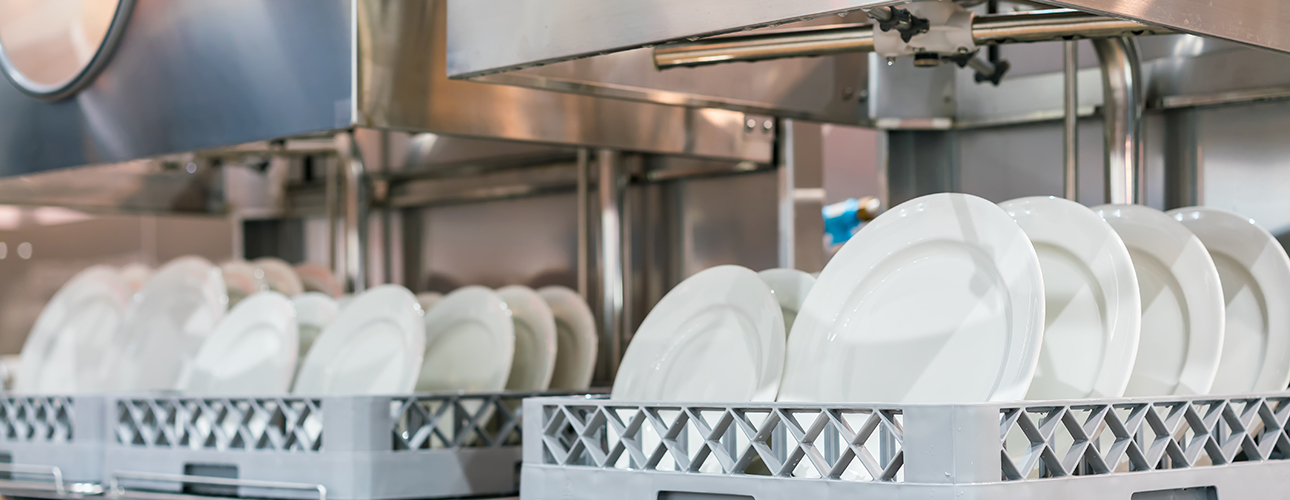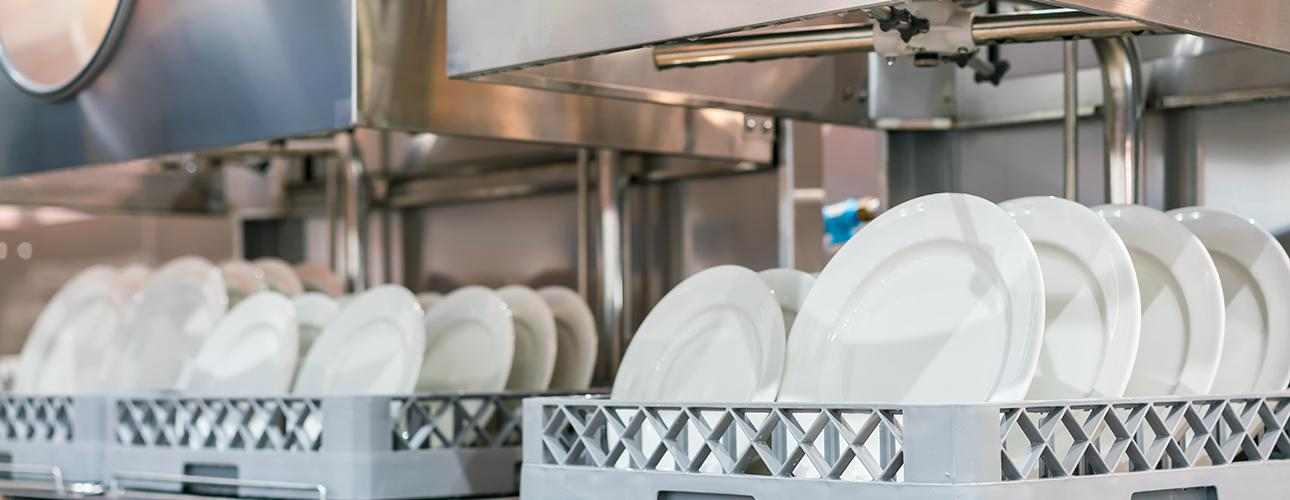Is your dish machine a sports car or a sedan?
Is my dish machine a high performance machine or a basic appliance? We might not think about it much after the purchase has been made, but if we keep in mind how they differ, your operation can be tuned to get the best results out of either type of machine. While both high temperature and low temperature machines can be effective in a wide range of food service applications, there are some areas where one will outshine the other.
How do these machines work and how are they different? Both machines will utilize the hot water supply in your kitchen during the wash and rinse steps . The biggest difference is how each one sanitizes your wares. A high temperature dish machine uses superheated water in the final rinse, and a low temperature machine utilizes a chemical sanitizer like chlorine. Having an adequate supply of hot water is crucial for the performance of both types. Low temperature operations need incoming hot water that is between 125℉ and 145℉(51-62℃). High temperature machines need a reliable hot water source between 140℉ and 150℉(51-65℃). A high temperature dish machine will have built in heating components to keep that water hot and this aids in the cleaning process. A low temperature dish machine typically does not have a heating element and most of these machines exchange the wash water during each cycle.
In the majority of cases, a high temperature dish machine uses a wash tank that holds a large volume of hot water to wash the dishes. It also will have a booster heater or other means to superheat the rinse water used to sanitize the dishes. Because we are operating at higher temperatures, the time it takes to wash and rinse dishes can be reduced. Wash temperatures range from 140℉ to 165℉(60-74℃), and a final rinse temperature of 180℉ to 190℉(82-87℃). These machines really shine in high volume operations where quick turnaround is key to running a smooth operation.
Low temperature dish machines do not have the heating components, and rely on the incoming hot water supplied to the dish room. Because of the reduced operating temperature, these machines will make up for that with longer cycle times. The normal range for wash and rinse cycles in low temperature machines range from 125℉ to 145℉(51-62℃). In medium to low volume operations, a low temperature machine can offer excellent results, and lower operating costs.
While each type of machine operates differently, getting peak performance for both requires the same steps. Check your machine each day to ensure that you have an adequate supply of hot water and the chemicals required for operation. Before, during and after peak business hours, check the interior of the machine and clean to remove excessive food soil and other contaminants. Keeping your machine clean will extend its operational life and produce better results. Regular descaling and detailed cleaning of the interior and exterior of the machine will keep your unit in top condition.
Thanks for taking the time to learn more about how your operation can get the best performance out of your dish machine. We hope you came away from this experience with ideas to get the most out of your dish machine, and I look forward to sharing more articles on how to keep your operation clean and productive.



